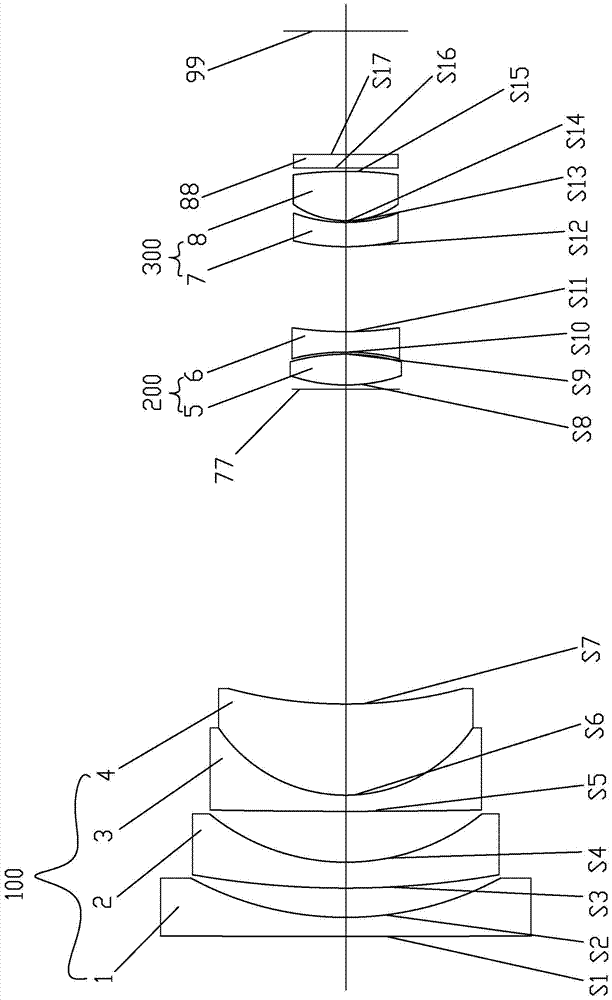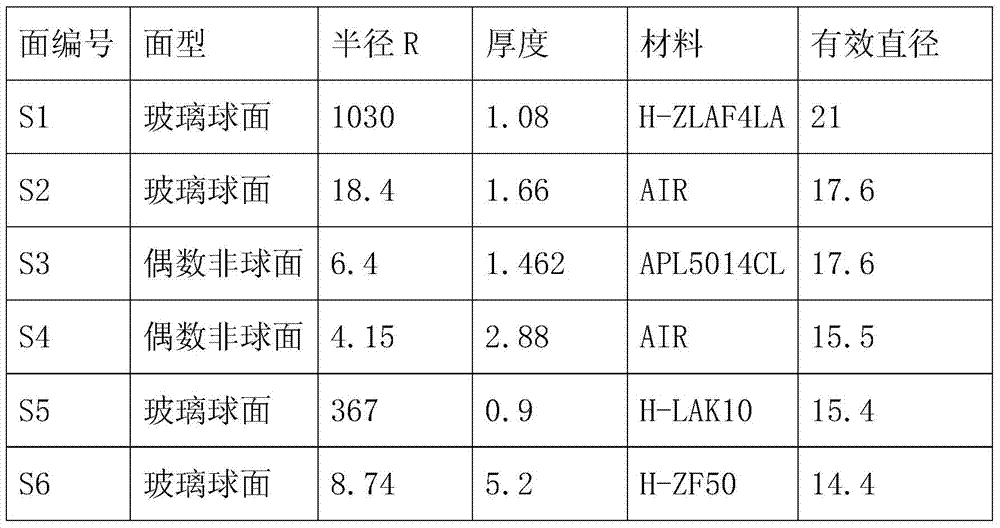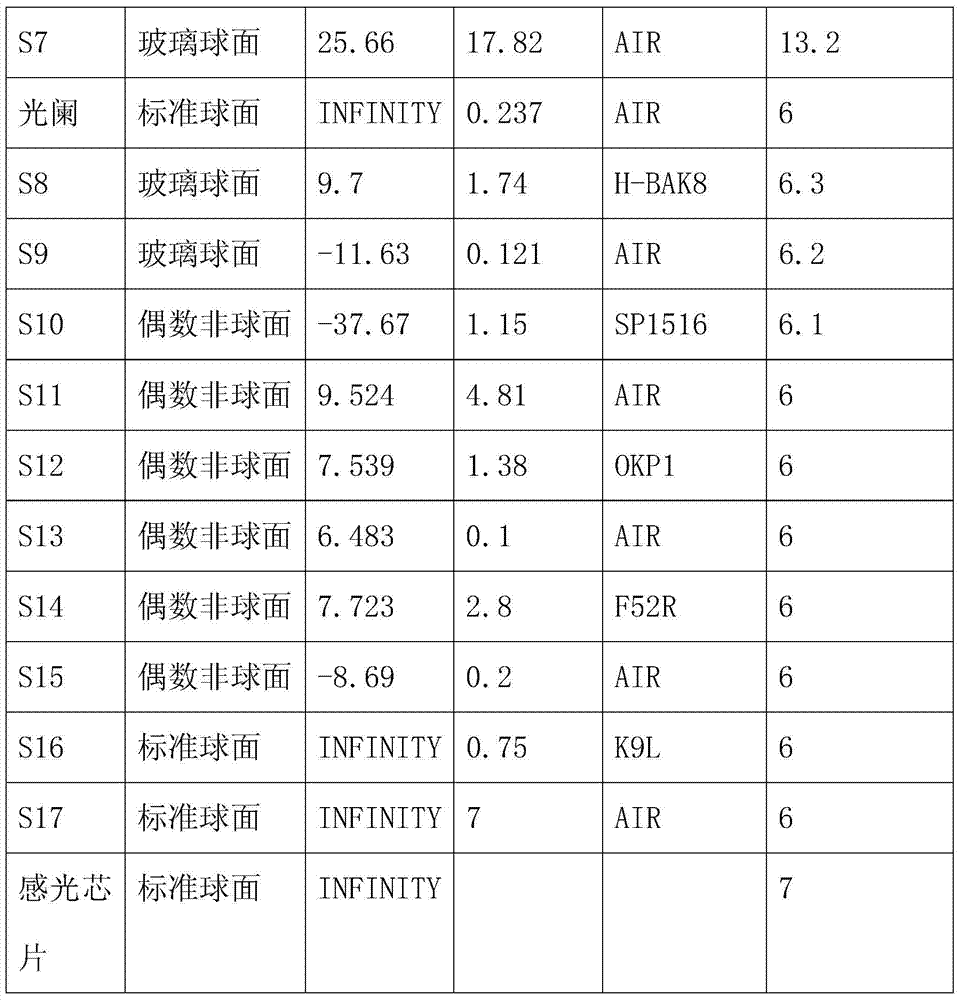A high and low temperature infrared confocal, large aperture, small volume optical system
An infrared confocal and optical system technology, which is applied in the field of optical systems, can solve problems such as image sharpness and color reproduction, poor adaptability to high and low temperatures, poor imaging quality, etc., and achieve good image sharpness and color reproduction, Good adaptability and cost reduction effect
- Summary
- Abstract
- Description
- Claims
- Application Information
AI Technical Summary
Problems solved by technology
Method used
Image
Examples
Embodiment Construction
[0019] The present invention will be further described below in conjunction with accompanying drawing:
[0020] A high and low temperature infrared confocal, large aperture, small-volume optical system, comprising a diaphragm 77, a photosensitive chip 99 and an optical filter 88 between the two. The first lens group 100 that the diaphragm 77 moves back and forth, the second lens group 200 is provided between the diaphragm 77 and the filter 88, and the second lens group 200 and the filter 88 are provided The third lens group 300 that can move back and forth relative to the second lens group 200, the first lens group 100 includes the first lens 1, the second lens 2, the third lens 3, the second lens arranged in order from the object side to the image side Four lenses 4, the focal lengths of the first lens 1, the second lens 2 and the third lens 3 are all negative, the focal length of the fourth lens 4 is positive, and the second lens group 200 includes from the object The fifth...
PUM
 Login to View More
Login to View More Abstract
Description
Claims
Application Information
 Login to View More
Login to View More - R&D
- Intellectual Property
- Life Sciences
- Materials
- Tech Scout
- Unparalleled Data Quality
- Higher Quality Content
- 60% Fewer Hallucinations
Browse by: Latest US Patents, China's latest patents, Technical Efficacy Thesaurus, Application Domain, Technology Topic, Popular Technical Reports.
© 2025 PatSnap. All rights reserved.Legal|Privacy policy|Modern Slavery Act Transparency Statement|Sitemap|About US| Contact US: help@patsnap.com



